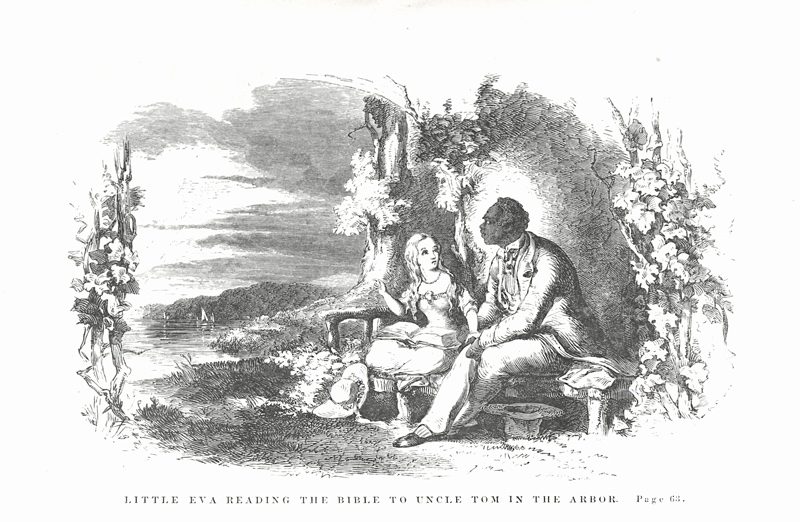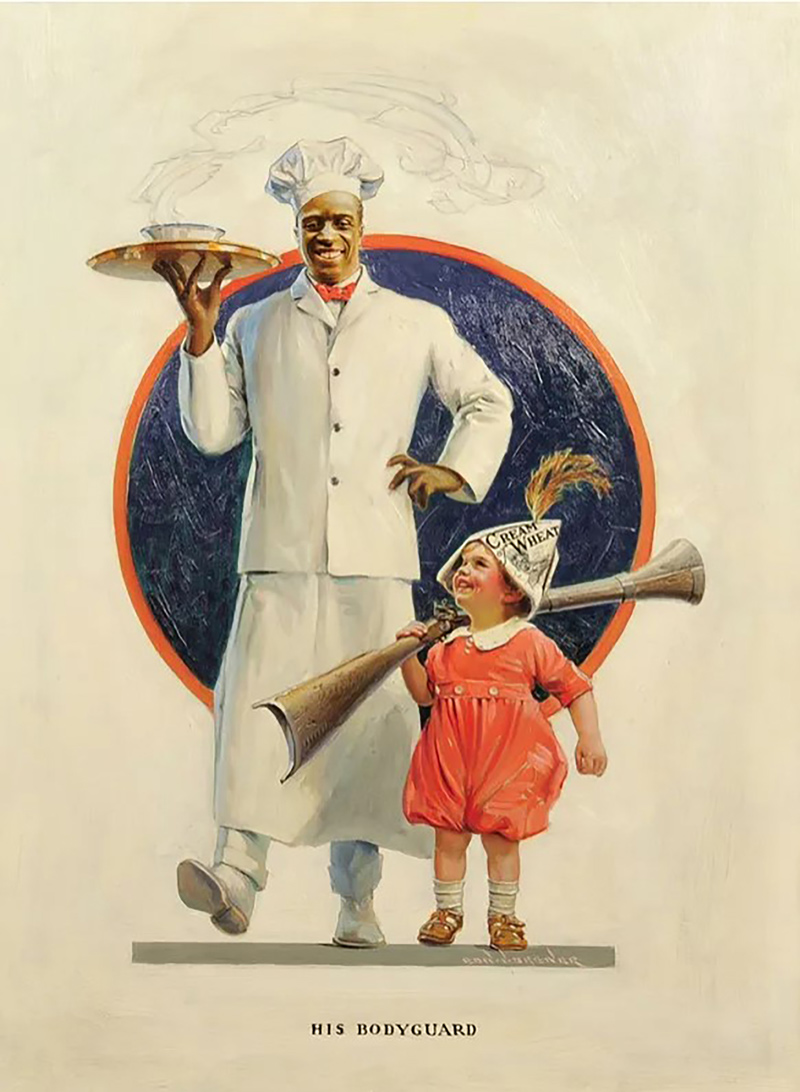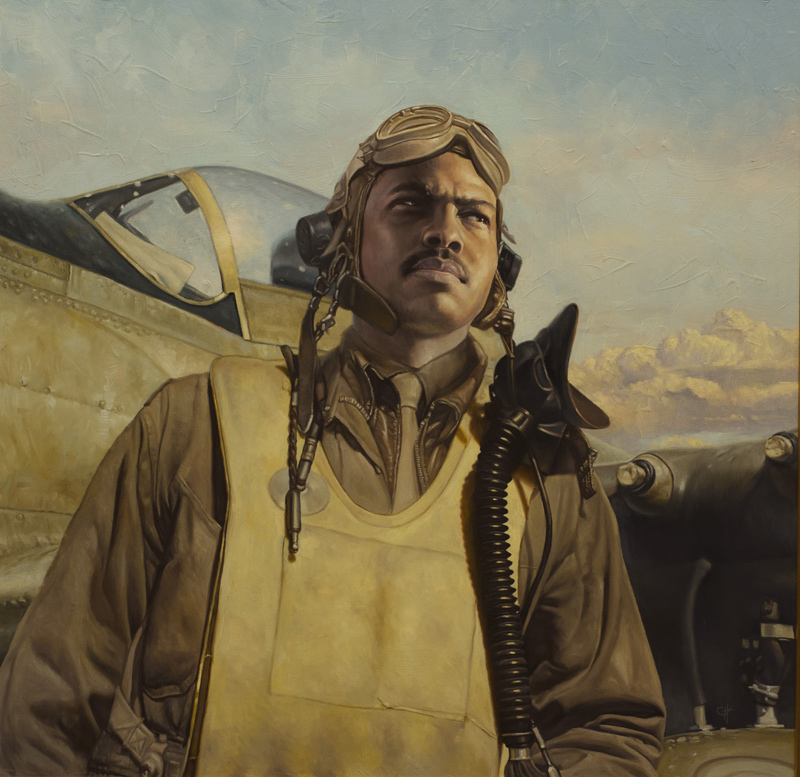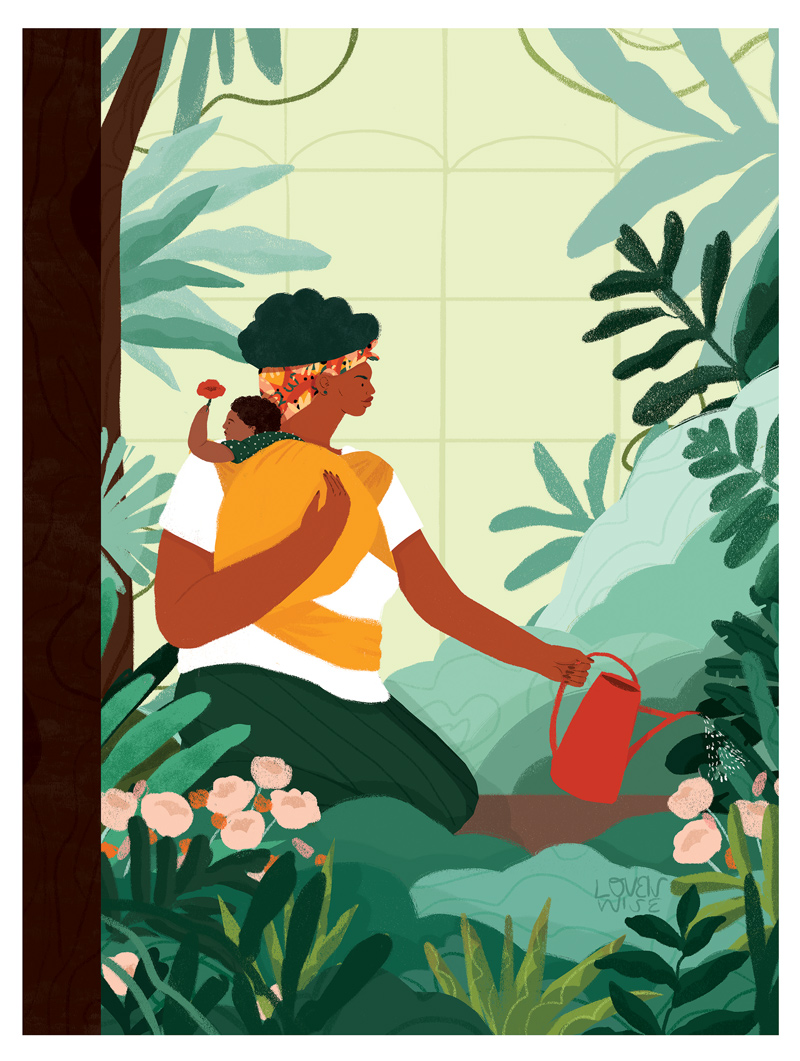


‘Imprinted: Illustrating Race’
Photos courtesy of the Norman Rockwell Museum, UD Special Collections and Museums, Chris Hopkins, Loveis Wise June 10, 2022
Exhibition explores centuries of images that influence our perceptions
From literature to magazine articles to cereal ads, illustrators have long been commissioned to produce work that attracts attention and often becomes part of popular culture and public perception, said the University of Delaware’s Robyn Phillips-Pendleton.
An illustrator herself, the professor of art and design knows that those perceptions that commercial illustrations reflect and disseminate can be — and often have been — derogatory representations of such groups as African Americans or Asian immigrants.
“Illustrations that were commissioned for public consumption, specifically for the public to see, are interwoven in our daily lives, and they have been for centuries,” said Phillips-Pendleton, who is a curator of a groundbreaking exhibition on the subject opening this month. “From them, we get our perceptions of people and groups of people.”
The exhibition, Imprinted: Illustrating Race, will be on view at the Norman Rockwell Museum in Stockbridge, Massachusetts, from June 11 through Oct. 30. Co-curators are Phillips-Pendleton and the museum’s deputy director and chief curator, Stephanie Haboush Plunkett, with a distinguished panel of national advisers including 10 scholars, curators and artists.
The show will feature more than 150 works that were created from 1590 to today and were widely published. It will examine how these harmful stereotypes influenced people’s perceptions about race as it seeks to open a dialogue on the subject. In addition to such illustrations as the original representation of Aunt Jemima, the exhibition also includes some objects such as the box of pancake mix on which that illustration appeared.
A significant collection of published illustrations for Harriet Beecher Stowe’s Uncle Tom’s Cabin from UD’s Special Collections will be featured in the exhibition.
People often visit museum exhibits to see original works of fine art, but Imprinted: Illustrating Race is different because the illustrations on view were produced for the general public to see, specifically to sell something, Phillips-Pendleton said. Some, like Aunt Jemima, were created for advertising campaigns, but others were commissioned to sell newspapers or magazines.
“Sometimes, the more outrageous the illustration, the more periodicals were sold,” Phillips-Pendleton said. “And the illustrators and engravers understood that as they worked with editors and publishers.”
Her own scholarship has focused on this subject, including a chapter titled “Race, Perception and Responsibility” she wrote in the textbook A Companion to Illustration. Her research on the history surrounding illustrations contributed a key part of the exhibition.
“People who come to this show will be able to see what was created in that specific time and get an idea of what life was like for people living then,” she said. “In my research, I follow the images. I want to see when an illustration was done, how it connects to other illustrations and what was going on in the country at that time.”
The exhibition explores how systems of publishing were used to shape beliefs and attitudes, said Laurie Norton Moffatt, director and CEO of the museum.
“Published images hold powerful sway on shaping our cultural attitudes,” she said in a news release announcing the exhibition. “Images can uplift, as Norman Rockwell’s work did, and they also can be deployed to establish negative and demeaning attitudes, as often happened with intention during formative centuries of published images in the United States. … Published illustration had a role in framing the United States racial attitudes — it is also a powerful tool for reframing stereotypes and celebrating this country’s strength in many cultural identities.”
The three sections of Imprinted: Illustrating Race explore the history of racial stereotypes in illustration, the changes and artistic outpouring by African Americans that emerged from the Harlem Renaissance through World War II, and the activism that occurred through art from the Civil Rights Movement of the 1950s to today.
Those modern pieces, by Black illustrators and others, highlight work that is striving to create positive and inclusive images, Phillips-Pendleton said, noting that even in the 1800s, not all images were derogatory. Views change over time, both for individual artists and for society, she said.
About Robyn Phillips-Pendleton
Robyn Phillips-Pendleton, who joined the UD faculty in 1996, is a practicing illustrator, visual storyteller, designer and educator.
She is the interim director of the MFA in Illustration Practice program at Maryland Institute College of Art and is a member of the board of directors of New York’s Society of Illustrators. She has exhibited her work in national and international exhibitions and is an artist for the U.S. Air Force Artist Program; her paintings documented the events following the earthquake in Haiti.
Phillips-Pendleton has created illustrations for institutions of higher education, children's CD covers, editorial magazines, picture books and publishing companies. Her most recent illustrated picture book is Homework for Breakfast, a poem written and performed by the Twin Poets of Wilmington, Delaware.
Her research focuses on the history of illustration and the influence of published imagery on perceptions of race.
Contact Us
Have a UDaily story idea?
Contact us at ocm@udel.edu
Members of the press
Contact us at 302-831-NEWS or visit the Media Relations website





